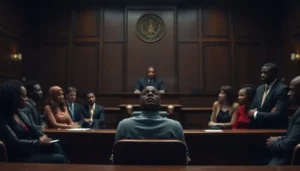Introduction: A Letter as Legacy
In “Between the World and Me,” Ta-Nehisi Coates crafts an intimate and evocative letter to his teenage son, Samori. More than a private message, the letter serves as both personal testimony and public reflection on what it means to live as a Black person in America. The work is a searing exploration of systemic racism, the fragility of Black bodies, and the persistent legacy of historical oppression. Structured as a coming-of-age narrative wrapped in cultural critique, Coates’ writing blends memoir, journalism, and philosophy into a poignant reckoning with the reality of race in the United States. This text is not simply about fatherhood or identity—it is a meditation on fear, survival, resistance, and hope.
Part I: The Structure of Oppression—Understanding the Roots of Racism

Racism in the United States did not arise spontaneously. It is deeply embedded in the country’s foundation, beginning with the transatlantic slave trade and continuing through centuries of structural inequities. Coates makes clear that America was built on the backs of enslaved Africans, whose bodies were commodified, dehumanized, and controlled. This legacy continues in the form of mass incarceration, economic inequality, housing segregation, and police brutality. Coates states unequivocally that racism is not merely a matter of individual prejudice but a systemic force wielded through laws, policies, and social norms.
Coates rejects the concept of the American Dream as universally accessible. He reveals it as a dream nurtured on the exploitation of Black lives. This disillusionment forms the backdrop of the letter to Samori. For Coates, the American Dream is not a shared aspiration but a vision built for some and denied to others. He underscores how Black Americans have been deliberately excluded from the ideals of liberty and justice, which are otherwise celebrated as the nation’s cornerstones.
Part II: Fear and the Black Body
Fear is central to Coates’ experience of Black identity. From his youth in Baltimore, where he navigated the threats of street violence and police aggression, to his adult reflections as a father, Coates describes how fear dictates the movements, decisions, and psychology of Black individuals. This fear is not imagined or irrational; it is rooted in generations of brutality and loss.
The Black body is at the center of Coates’ narrative. He does not speak in abstractions but insists on the physical reality of racial oppression. The body can be broken, killed, and disappeared. This brutal truth challenges the sanitized narratives of American exceptionalism. Coates discusses how even mundane activities—walking down the street, playing in a park, driving a car—carry the risk of violent confrontation for Black people. He emphasizes that the stakes are not theoretical; they are life and death.
Part III: Education and the Illusion of Safety
Coates examines the role of education in both perpetuating and potentially dismantling systemic racism. He critiques the American education system for its failure to tell the full truth about the country’s history. Instead of fostering critical thought, many schools uphold the myth of American innocence. Coates’ own academic awakening occurred outside the classroom, in libraries and through independent study of African American literature and radical political theory.
For Coates, real education lies in seeking truth, no matter how painful. He urges Samori to read, question, and resist comfortable narratives. Education is a form of empowerment, a way to reclaim history and identity. But it is not a shield against violence. Coates warns that knowledge alone cannot prevent the injustices Black people face, yet it is essential for survival and resistance.
Part IV: Intergenerational Trauma and Historical Continuity
The pain of racism does not exist in a vacuum; it is passed down through generations. Coates explores the weight of intergenerational trauma, not as an abstract concept, but as a lived reality that shapes Black family dynamics. From his grandparents to his parents to himself, each generation has had to navigate a world designed to marginalize them.
Yet this transmission of experience is also a source of strength. Coates honors the resilience of his ancestors who endured slavery, segregation, and systemic discrimination. Their survival is a testament to resistance and dignity. By sharing these stories with Samori, Coates contributes to a tradition of truth-telling and legacy-building. He offers not just warnings but a framework for understanding and confronting injustice.
Part V: The Personal is Political: Coates’ Baltimore and Beyond
Coates’ personal narrative, rooted in the streets of Baltimore, reveals how racism functions at the most intimate levels. He writes about growing up in a neighborhood shaped by redlining, underfunded schools, and over-policing. Violence was a constant presence, and young Black men learned early how to read danger, avoid conflict, and suppress vulnerability.
This upbringing is not presented as unique but emblematic of the Black urban experience in America. Coates connects his story to broader patterns of structural neglect and racialized policy. He also describes his journey to Howard University, which he calls “The Mecca.” There, he found a sanctuary of Black excellence, intellectual rigor, and cultural pride. This experience was transformative, offering a glimpse of what life could be beyond the constraints imposed by white supremacy.
Part VI: The Role of Fatherhood: Love and Warning

Fatherhood is a central theme in Coates’ narrative. His letter to Samori is filled with both love and fear. He wants to protect his son but knows he cannot shield him from the dangers of the world. Instead, he offers truth. Coates does not sugarcoat reality; he prepares his son for it. He tells him that there is no safety in illusion, and that awareness is the first step toward agency.
Coates also challenges traditional notions of masculinity. He encourages tenderness, emotional expression, and vulnerability. In a society that often expects Black men to be stoic and hardened, Coates’ message is radical. He redefines fatherhood as a practice of emotional honesty and political clarity. This model empowers sons not just to survive, but to think, feel, and transform their world.
Part VII: Cultural Impact and Public Discourse
“Between the World and Me” has had a profound impact on American culture and public discourse. Published in 2015, it resonated deeply with readers during a period marked by high-profile police killings of Black Americans and the rise of the Black Lives Matter movement. Coates’ voice became a central one in conversations about race, justice, and identity.
The book won the National Book Award for Nonfiction and has been widely taught in schools and universities. Its success reflects a growing recognition of the need to confront uncomfortable truths. Coates does not offer easy solutions, but he does demand accountability. His work challenges readers to examine their own positions within systems of privilege and oppression.
Beyond the literary world, Coates’ ideas have influenced policymakers, educators, and activists. His call for reparations, outlined in a separate essay, gained new traction in national debates. “Between the World and Me” helped shift the cultural conversation from colorblindness to structural critique.
Part VIII: Reflections on Hope and Future Generations
Despite the bleakness of some of his observations, Coates does not write without hope. His hope lies in truth, in the act of bearing witness. He believes that by telling the truth—about history, about injustice, about fear—we make space for change. The letter to Samori is an act of faith: faith in his son’s strength, intelligence, and humanity.
Coates also believes in the power of collective memory. He urges readers to remember those who have been lost to violence and to honor their lives through action. Change may be slow and uncertain, but it begins with awareness and courage. Coates passes this responsibility to his son, and by extension, to all who read his words.
Conclusion: An Invitation to Reckon
“Between the World and Me” is more than a personal narrative; it is a cultural milestone. Ta-Nehisi Coates invites readers into a conversation that America has long avoided. He demands that we reckon with the realities of systemic racism, the fragility of Black life, and the enduring power of truth. His letter to his son is also a letter to the nation, a challenge to live up to its promises of freedom and equality.
Through lyrical prose and unflinching honesty, Coates redefines the contours of American identity. He gives voice to the pain, the pride, the fear, and the hope that define the Black experience. In doing so, he leaves an indelible mark on literature and public consciousness. As readers, we are called not only to listen but to act, to question, and to imagine a better world for future generations.
The conversation does not end with the final page. It continues in classrooms, in communities, and in the hearts of all who dare to confront the truth. Through his letter, Coates hands us a mirror—and a responsibility. The question is: will we look, and will we change?



